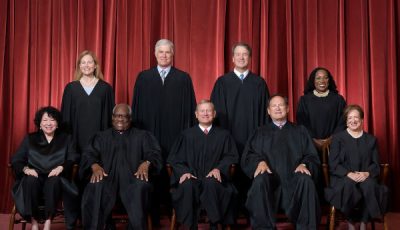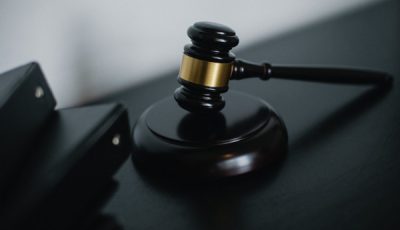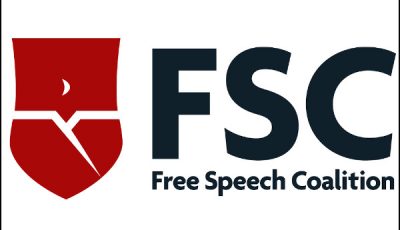Legal Lessons From the Miami Velvet Case May Still Be Coming
 MIAMI, Fla. – Back in September, I wrote about a federal jury in Miami awarding a little under $900,00 to 32 women who sued the swinger’s club Miami Velvet, presenting the case as a reminder that it’s never good business to use content to which you don’t own the rights. As it turns out, this may not be the last lesson the case has to offer observers in the adult industry.
MIAMI, Fla. – Back in September, I wrote about a federal jury in Miami awarding a little under $900,00 to 32 women who sued the swinger’s club Miami Velvet, presenting the case as a reminder that it’s never good business to use content to which you don’t own the rights. As it turns out, this may not be the last lesson the case has to offer observers in the adult industry.
In a motion filed last Friday, Luke Lirot, the experienced Florida attorney representing the defendants in the case moved for the court to reconsider the amount of the damages awarding to the plaintiffs, arguing that the plaintiffs never established personal liability on the part of defendant Joy Dorfman (AKA “Joy Zipper”) the president of Velvet Lifestyles, LLC – and that the damages awarded against the other defendants were based on a “grossly inflated” value of the images based on the “purely hypothetical approach” of the plaintiffs’ expert witness, Stephen Chamberlin.
As to Dorfman, Lirot asserting that the plaintiffs “did not introduce any, let alone sufficient evidence relating to damages which could be attributable” to Dorfman, which he then further argued left the court no reason to “pierce the corporate veil” and assign liability to her.
“Neither the testimony of Joy Dorfman, nor the testimony of any other witness, supported the inclusion of Joy Dorfman as a personally liable defendant against whom damages could be assessed,” Lirot wrote in the motion. “To the contrary, the trial testimony unequivocally established that Joy Dorfman had no participation whatsoever in the day-to-day management of Miami Velvet, the subject Club, and likewise did not participate, influence, weigh in on, select, or approve the advertising which forms the sole basis of the liability and damages in this case.”
Lirot also noted that despite the fact the plaintiffs had all the club’s financial records, tax returns and internal correspondence relating to the operation of Miami Velvet, “Plaintiffs could not and did not muster any evidence throughout the years’ long duration of this case that could establish any personal liability as to Joy Dorfman or responsibility for Plaintiffs’ damages as found by the Jury.”
“Given the total lack of evidence relating to Ms. Dorfman, no reasonable jury could assess damages against her,” Lirot added.
Lirot then argued that if there isn’t enough evidence to hold Dorfman personally liable, it stands to reason that there can’t be enough to justify the court piercing the corporate veil, either.
“In order for Joy Dorfman to be held individually responsible for any alleged wrongdoing, Plaintiffs must show that they have sufficient facts to pierce the corporate veil or that she participated in the wrongdoing,” Lirot reiterated. “Other than holding a ‘position’ with the corporate Defendants, which is a matter of public record, the Plaintiffs, having conducted extensive discovery and cross-examination during Joy Dorfman’s trial testimony, have absolutely no evidence that Joy Dorfman ‘directed, controlled, ratified, participated in, or was the moving force behind the infringing activity’ at issue in the instant action.”
Turning his attention to the damages awarded against the other defendants, Lirot asserted the plaintiffs “generally failed to submit sufficient evidence to the jury to permit the jury to assess damages against the Defendants.”
“Plaintiffs pursued two forms of damages, actual damages and compensatory damages, the latter of which they premised upon the value of the images used,” Lirot wrote. “For the latter, Plaintiffs sought to grossly inflate the value based upon the testimony of their expert, Stephen Chamberlin. As to actual damages, e.g., lost jobs, lost clients, costs to rehabilitate brand, or the like, of the Plaintiffs who did attend the trial, exactly zero of them testified to suffering any actual damages.”
As the above passage implies, many of the plaintiffs never appeared in court to testify about the alleged damage done to them by the club’s use of their likenesses in its advertising, relying instead on Chamberlin’s assessment of compensatory damages – an assessment with which Lirot took strong exception in his motion. (More on that aspect of the case below.)
With respect to the value of the images at issue in the case, Lirot wrote in his motion that the plaintiffs relied on “day-rates” – the amount the models were paid for the shoots which produced the images in question. Lirot further noted that the day rates “are not the value of the digital images themselves, but rather represent recompense for the Plaintiffs’ time, brand and, among other things, likeness, in participating in the photo shoot and allowing use of their images.”
Beyond the day rates, however, Lirot argued that the plaintiffs “could not introduce any hard, direct evidence establishing the value of the actual images that were used by the Defendants.” He also observed that 11 of the plaintiffs “did not attend and provide their day-rates” and argued that “judgment as a matter of law should awarded in favor of the Defendants as to those Plaintiffs for that reason alone.”
As for Chamberlin’s expert analysis, Lirot asserted in his motion that Chamberlin “did nothing at trial to flesh out how he achieved the seemingly random, astronomical (relative to the actual day-rates) valuations for the images used.”
“Mr. Chamberlin’s purely hypothetical approach led to absurd contradictions such as the use of Plaintiff Krupa’s relatively staid image being valued at $900,000, when she was paid only $5,000.00 for use of her Face and Name on huge billboard in Las Vegas advertising a Gentlemen’s Club there,” Lirot wrote, adding in a parenthetical statement that “despite not even appearing at trial to testify as to her own damages, the jury awarded Ms. Krupa $65,000.00.”
Lirot further argued that the “best indication that Mr. Chamberlin’s testimony was too speculative to go to the jury” was that the damages the jury awarded for each plaintiff “bore absolutely no relation Mr. Chamberlin’s testimony and opinions, other than that they exceeded the Plaintiffs’ actual day-rates for the actual photos used.”
“Given the purely speculative nature of Mr. Chamberlin’s opinion, it must be concluded that the jury’s damages assessment for each Plaintiff is also speculative, and therefore, subject to relief,” under federal law, Lirot concluded.
So, what are the (potential) additional lessons adult industry observers can take from this case that I referenced at the start of this article?
First, it’s one thing to prove your legal adversary has done something which has harmed you, but quite another to determine what the amount of compensation should be for that harm – and when the time comes to argue in support of the damages you claim, it’s probably not a bad idea to show up in court and make that argument. Second, if one of the targets of your lawsuit is an individual who can only be liable if you pierce the corporate veil, you need to give the court a reason to make that piercing happen.
I refer to these as “potential” lessons quite intentionally, because until or unless the court rules agrees with Lirot and rules in his clients’ favor, the assertions he made in his motion are just that – assertions made by a party to the dispute.
The court may well disagree with Lirot and determine there’s no defect to the plaintiffs’ evidence or arguments, no issue with piercing the corporate veil where Dorfman is concerned and no problem with Chamberlin’s expert testimony on damages. Either way, I’ll keep an eye on this case to see if the potential additional legal lessons materialize, or if the status quo is maintained with respect to the damages awarded by the jury back in September.













